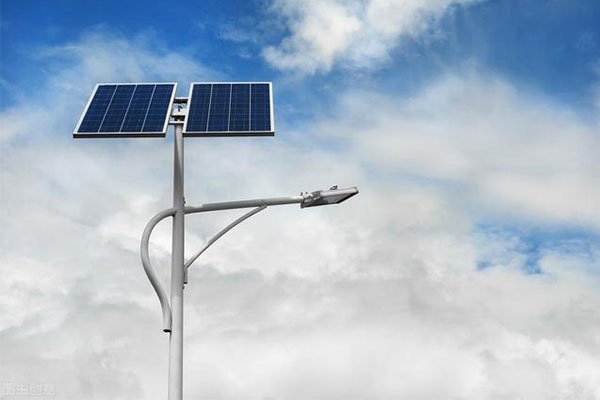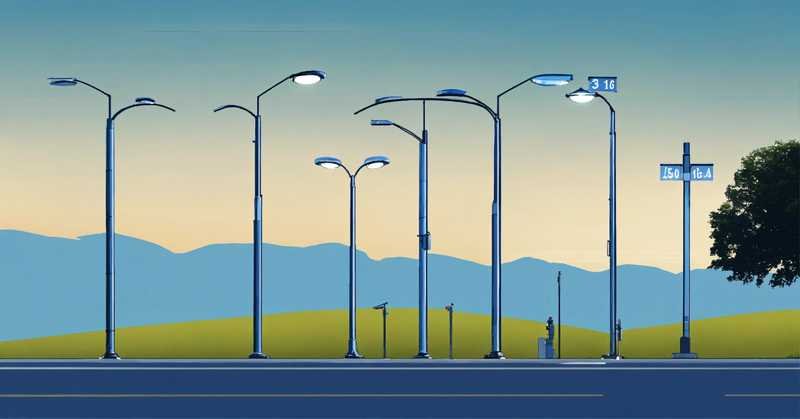Solar street lights are gaining popularity worldwide due to their energy efficiency, sustainability, and cost savings. However, are they the perfect solution for every location?
While solar street lights reduce electricity bills and require minimal maintenance, they also come with challenges such as high initial cost1s and dependence on direct sunlight2.
Before investing in solar street lighting, it's crucial to evaluate both the advantages and disadvantages to determine if they suit your needs.
The Pros of Solar Street Lights
Solar street lights provide multiple benefits, from cost savings to environmental sustainability. Below are the key advantages:
Safe and Eco-Friendly Energy: Unlike conventional street lights that rely on electricity from fossil fuels, solar street lights generate energy from the sun3, reducing carbon emissions and pollution. They also eliminate risks associated with electrocution, overheating, and fire hazards, making them safer for public areas.
Sustainable and Renewable Light Source: The sun provides an unlimited and free source of energy, making solar street lights highly sustainable. Unlike traditional lighting systems, which require fuel, gas, or electricity, solar lights operate independently, reducing dependency on non-renewable resources.
Low Maintenance Requirements: Since solar street lights have fewer moving parts and require no underground wiring, maintenance costs are significantly lower. LED fixtures last longer than traditional bulbs, and solar panels are built to withstand harsh weather conditions with minimal efficiency loss over time.
Longer Life Span and Better Efficiency: Solar street lights operate independently of the electrical grid, ensuring continuous operation even during power outages. They don’t suffer from blown fuses, circuit overloads, or voltage fluctuations, which are common in traditional lighting systems. Their automated switching system reduces wear and tear, prolonging the lifespan of the components.
No Cable-Related Issues: Traditional street lights require underground wiring, which is costly and vulnerable to theft or damage. Solar street lights eliminate cable-related hazards, such as electrical shocks, short circuits, and overheating. They are particularly beneficial in rural or remote areas where electrical infrastructure is underdeveloped.
Comparison of Solar and Traditional Street Lights
| Feature | Solar Street Lights | Traditional Street Lights |
|---|---|---|
| Energy Source | Renewable (solar power) | Grid electricity (fossil fuels) |
| Maintenance | Low | High (frequent bulb replacements) |
| Installation Cost | Higher upfront cost | Lower initial cost |
| Operating Cost | Zero (no electricity bills) | Ongoing electricity costs |
| Durability | 5–10 years (with proper battery replacement) | 3–5 years (frequent maintenance needed) |
| Risk of Power Outage | None (works off-grid) | High (affected by grid failures) |
| Safety Concerns | No risk of shocks or overheating | Risk of electrical accidents |
The Cons of Solar Street Lights
While solar street lights offer many benefits, they also have limitations that need to be considered before implementation.
Higher Initial Cost: The biggest disadvantage of solar street lights is their high upfront cost, which includes the solar panels, lithium-ion batteries, LED fixtures, and pole installation. The cost per unit is significantly higher than conventional street lights, which may deter some buyers.
Not Ideal for Extreme Weather Conditions: In regions with heavy snowfall, dust storms, or prolonged cloudy weather, solar panels require frequent cleaning to maintain efficiency. If panels become covered with dirt, snow, or debris, they fail to generate sufficient energy, leading to reduced lighting hours at night.
Increased Risk of Theft: Since solar street lights operate as standalone units, they are easier targets for theft and vandalism compared to grid-connected lights. Their high resale value, especially the batteries and solar panels, makes them vulnerable in areas with high crime rates.
Dependence on Direct Sunlight: Solar panels require at least 6–8 hours of direct sunlight per day to function optimally. In regions with frequent rain, fog, or cloudy weather, energy production is significantly reduced, leading to shorter lighting hours or complete failure. Unlike traditional lights, which work regardless of weather conditions, solar street lights may require backup power solutions in less sunny climates.
Challenges of Using Solar Street Lights
| Limitation | Impact on Performance | Possible Solution |
|---|---|---|
| High Initial Cost | Expensive upfront investment | Long-term savings offset costs |
| Weather Sensitivity | Reduced efficiency in poor weather | Regular cleaning and maintenance |
| Theft Risk | Solar components attract thieves | Secure mounting and anti-theft design |
| Sunlight Dependency | Less effective in cloudy areas | Use high-capacity batteries |
Conclusion
Solar street lights offer significant long-term benefits, including sustainability, cost savings, and minimal maintenance. They are ideal for locations with plenty of sunlight and limited electrical infrastructure. However, their high initial cost1, vulnerability to theft, and dependence on weather conditions make them less suitable for every environment.
Before investing in solar street lights, it is essential to evaluate the budget, local climate, and security conditions. For areas with reliable sunlight and strong security measures, solar lighting is an excellent choice. However, in regions with frequent cloud cover or high theft rates, additional protective measures or alternative solutions may be required.
Understanding the factors behind the initial investment can help in making informed decisions about solar street lighting. ↩ ↩
Learn about the impact of sunlight availability on solar street lights and potential solutions for cloudy regions. ↩
Explore how solar energy generation can enhance street lighting efficiency and sustainability. ↩







